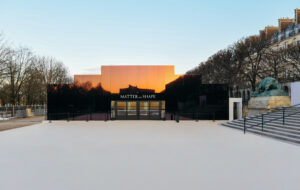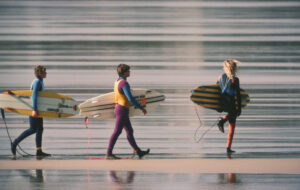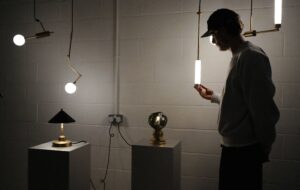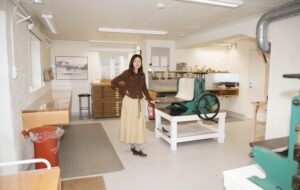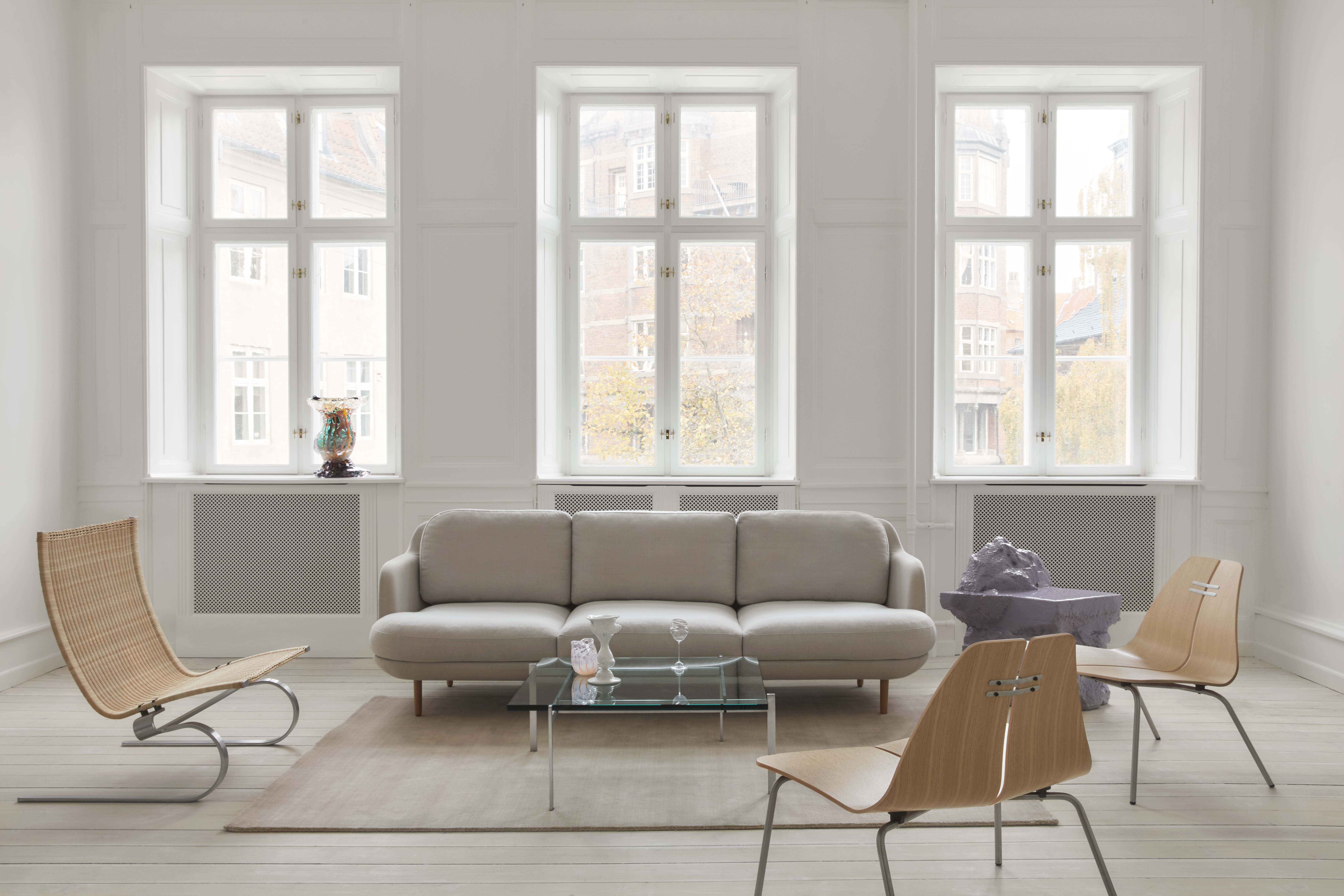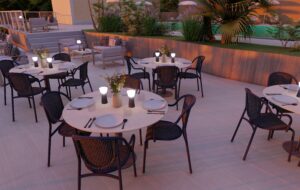

words Kieran Long
The Santo Volto Church, in a northern suburb of Turin, could easily be mistaken for a cluster of cooling towers.
It is made up of 21 kinked red-brick towers, looking as if they were born at the back of a Broadgate office building, before bulking up a bit and arranging themselves in a circle. The tops splay slightly like an oversize bunch of flowers.
The new building by Swiss architect Mario Botta could be said to fit right in. This part of Turin used to be its industrial powerhouse, but the decline of manufacturing in the city has meant it has been derelict for some time. It is now under redevelopment, and ugly new apartments occupy city blocks next to the strange remnants of industrial buildings. One of these neighbours the site of Santo Volto, with lines of rusting columns marching remorselessly across the landscape.
Botta was appointed in 2001 to build a church and parish facilities in advance of hundreds of units of apartments in the area. His approach is extreme. While the church itself is a product of Botta’s fascination with abstract geometric forms, the resulting circular building is brought into some kind of city-making order through a highly conventional cloister running around two sides of a new elevated plaza. The cloister, which contains offices (this is not a monastery), does give some kind of orthogonal context to the eccentric object that Botta has conjured in this peripheral part of the city.
The complex is remote from the street. Although three sides of the building front directly on to streets, there is little active frontage. The principal entrance to the site is from the south, but the door to the church is in the north facade of the circular building, so the visitor must choose one of two staircases to rise a whole storey to the level of the piazza before turning 180º to enter. The best choice is to take the long way round. Circling round the east of the church you inevitably come very close to the pinkish brick facade, close enough to see how the rusticated stone base of the church really looks as if it sits on, or is buried in, the black tarmac of the ground. The next object in sight is the spectacular campanile, a concrete smokestack retained from the site’s previous industrial life, embellished with a strange winding strip of antenna-like protuberances. This is the first and most explicit reference to baroque aesthetics in the building, calling to mind the helical Solomonic columns that characterise so many altars in the city, such as those in the churches of Corpus Domini and Guarino Guarini’s wonderful San Lorenzo (built between 1668 and 1687, a jewel hidden behind an innocuous facade on the Piazza Reale).
The piazza has two large circular voids cut into its surface, revealing the car-parking and community facilities housed in the plinth. The larger forms a circular courtyard. The perimeter to the north and west is a simple three-storey brick block, with a colonnade that is only remarkable for the distance between its pillars, which feels excessively long, presumably intending to reveal that this is a building made using modern methods of construction. The colonnade is an extremely typical Turin archetype, but this is a modest cloister compared to the grandiose commercial arcades of the city centre.
The doorway to the church is through a single-storey lobby, which looks decidedly light industrial in its black steel cladding and exposed frame. Its only distinguishing feature (it is not a distinguished piece of design, it must be said) is that it is T-shaped in plan, a form that is made highly symbolic by Botta on the building’s interior, recurring in all sorts of contexts, most importantly in the crucifix in this church, which uses a T-shape rather than the more common cross.
Once through the doors you pass between two large columns, ellipses in plan, and into the mightily impressive interior. Your gaze is instantly drawn upwards, almost so that you don’t notice the slight rake on the floor, which gives the church a theatrical atmosphere and provides great views from the back of the congregation. But the roof is the important thing. What reads as a cluster of towers on the exterior now seems like a vertiginous cupola carved from a solid mass. Indirect light washes the walls, which are made from a strange timber and render combination that makes them look like impossibly large medieval pieces of construction. The church is symmetrical, like many baroque churches, but only in one axis.
In this it distinguishes itself from the liberal Catholic world view that created Liverpool cathedral, Britain’s most important modern Catholic building. There the altar is in the middle of the circular building. Here it sits in front of one of the bays, with bays to the left and right containing the Lady Chapel and the tabernacle respectively. Behind the altar is a gratuitous reference to the Turin Shroud. Pixellated and 10.8m high, it looks bombastic and patronising, appropriating this image as if it were a portrait of Che Guevara.
The congregation sits on pews arranged on a tilted disc of marble, the diameter of which fills the space within the paired columns. The priest’s realm is an ellipse, also in marble, sitting on top of this disc. On it are the Botta-designed altar, chair and lectern, all characteristic compositions of pure geometric solids.
The major success of this building can only really be understood when you are there. The disconnection between the towers of the exterior facade and the carved out space inside is extreme. Botta has clad the pitched roofs in an anonymous dark steel, so that they recede compared to the banded brickwork of the towers. Inside, though, the pitches are dominant, bringing the eye towards the roof, and also down towards the various chapels around the perimeter. It is an extreme shift, achieved through very clever use of materials as much as its geometric root.
But this is where the building is ambiguous, and I’m not sure in a good way. Botta’s interest in geometric forms is twofold. On the one hand, he says: “To build is a sacred act, an action that transforms a condition of nature into a condition of culture,” and one senses that he shares with baroque architects a faith in geometry as the medium through which this translation occurs. On the other hand he has an interest in rendering legible the shapes he makes outside and in, which is where he differs significantly with his baroque inspiration.
There is an extraordinary construction picture from March 2005 that shows formwork arranged in a perfect seven-pointed star, laid out across the site. This simple geometric gesture has been manipulated expertly by Botta. But he cannot let it go. He suppresses and accentuates, but he does not let his building assume any character of its own.
In the end, the exterior is all geometry and no facade – it has a baroque belief in an ordering system of numbers that reflects perfection in nature, but it has nothing with which to face the city. Contrast this with Guarini’s San Lorenzo church. This extraordinary building begins with an eight-pointed star, which forms the intersecting arches of the cupola, and is inscribed on the floor beneath it in the centre of the plan of the symmetrical building. My expertise is not enough to enumerate all of the complexities of this interior, but there are radiuses, arches, splayed collections of columns, constantly hinting at geometries that become barely decodable and overwhelming in their effect. Guarini did propose a baroque facade for the building, but did not get his way. The need for the Piazza Reale to have absolute coherence meant that the building was given an almost banal exterior that looks more like an apartment building than a church. But as historian Alberto Perez-Gomez says: “[Guarini’s] architecture, however, was not merely a reflection of the geometrical structure of the cosmos, but achieved the status of quasi-natural objects, created through the magic of combinations and an emphasis on the sensuous qualities of matter, a process that Guarini considered analogous to that of divine creation.”
But what is it that Botta believes in? Perhaps he is trying to marshal the classical orders of our time, in cooling towers and chimneys, into some kind of geometrical order that can suggest the divine. Perhaps it is unfair to test Botta’s work against the baroque masters of Turin, when the context is so different. But although this building has enough complexity about it to suggest that Botta may be the greatest architect of churches working today, it never really adds anything more than geometry to a new piece of city that cries out for character. This is why the building is, in the end, intimidating, inward-looking and abstract.
All images: Enrico Cano

